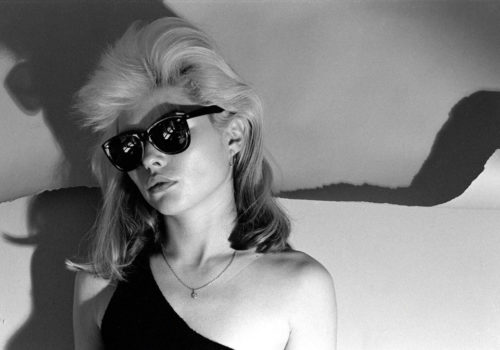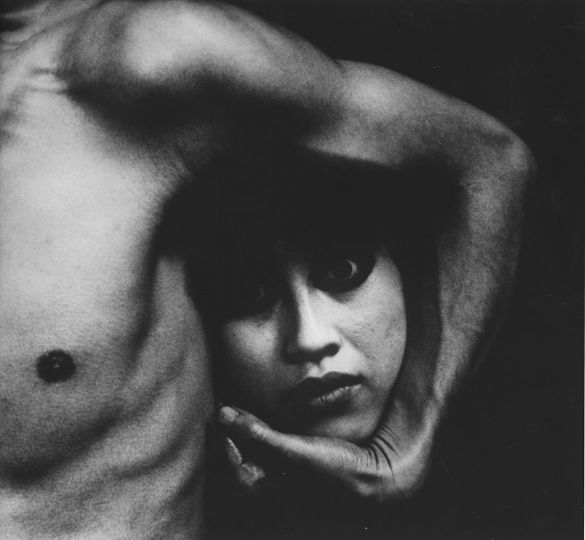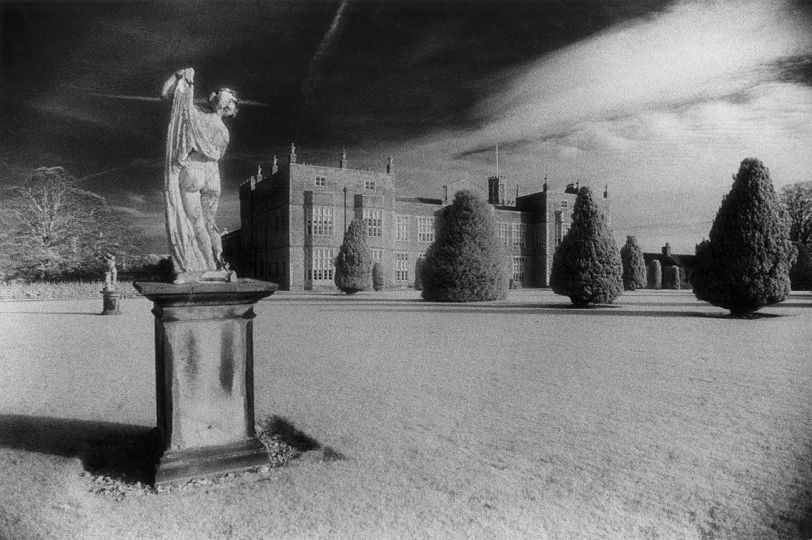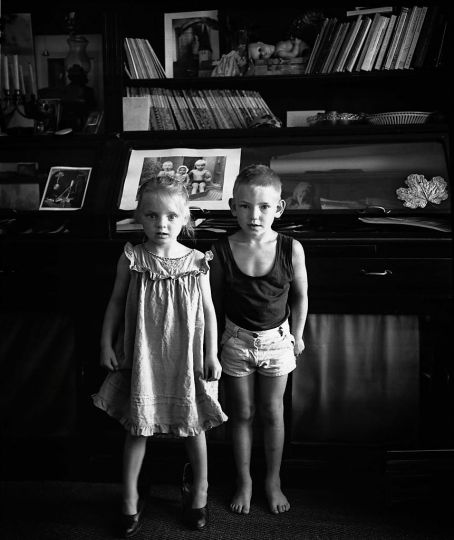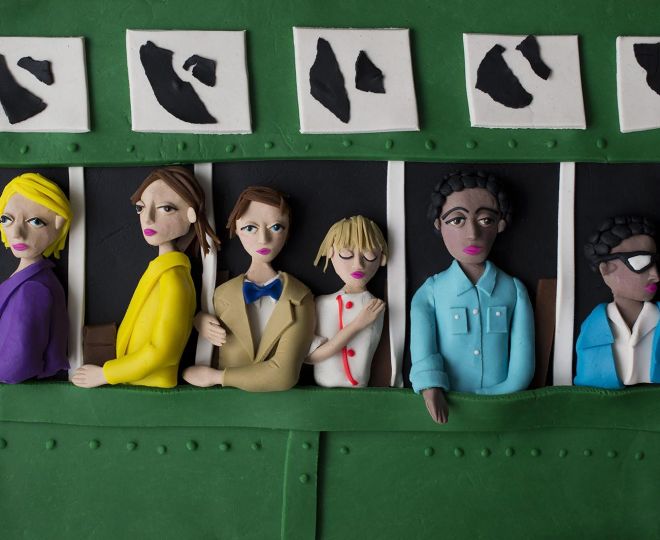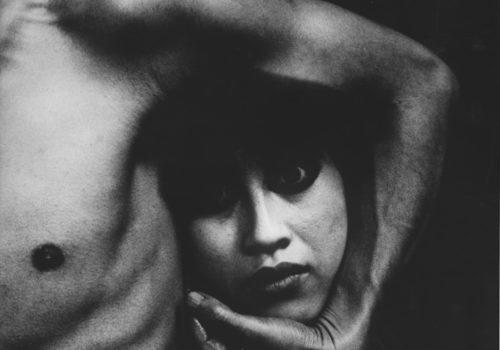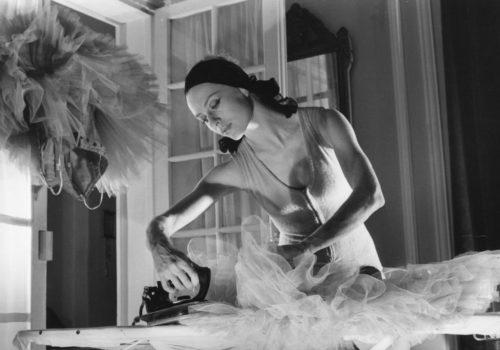Arriving in New York in the early 1970s, Christopher Makos fell in with the artists at Andy Warhol’s Factory and the underground music clubs on the Bowery. It was the dawn of punk, the exuberant days of denim and safety pins. Lost in their heady creativity, they gave Makos and his camera unprecedented access. An expanded version White Trash, Makos’ legendary 1977 book, was reissued by Glitterati in June, and this season they’ve published another retrospective of the photographer’s work, Everything: The Black and White Monograph. We spoke with Makos during a stop on his current “European Tour” about his memories of the seventies.
Let’s start at the beginning. How did you end up at Warhol’s Factory?
Christopher Makos: When I arrived in New York, I was writing poetry. I met the actor Anthony Perkins, who gave me a camera. Between the price of the film, development and printing, taking pictures was very expensive at the time, so I had to sell them. An editor at Rolling Stone published my first pictures, then I did an exhibition in 1976, Step on the Photographs. Bob Colacello from Interview magazine liked what he saw and told Andy Warhol about it. I went to see him at The Factory and started working with him on several of his books. I had met him once before at the Whitney Museum through a writer friend. Tennessee Williams, etc., everyone gravitated around Warhol’s Factory at the time. People were constantly coming and going. New York is like that. It’s a collection of little villages, little communities that don’t mix.
What did the Bowery look like back then?
Everyone was there, friendly and accessible. You met people in the street and it was easy to say, “You look great, I love your outfit.” You see that photograph of the CBGB awning. It stayed the same for years, and now it’s been turned into a shop for the designer John Varvatos, who kept the original posters and black walls.
You must have gone to a lot of concerts.
Not just at CBGB. I also went to little venues where bands like The New York Dolls and Talking Heads played. I met all the musicians, Richard Hell, Tom Verlaine from Television, Divine, and they invited me to their concerts and parties. I took pictures of what was happening. I almost never worked on commission. I would find something interesting and then publish it.
In his introduction to White Trash, Andrew Crispo writes: “By his imaginative probing and fierce recollection, Makos documents and—in an act of intense identification—becomes the culture he defines: an unruly mise-en-scene of punkish posturing and ambisexual allure.” He also speaks of the “process of social brutalization.” I’m curious to know how you would describe those years.
I grew up in Massachusetts, then moved to California. I moved to New York when I was 20. That’s when I really came to life. I spent time with Warhol and went back and forth to France. One memory that stands out is photographing Elizabeth Taylor in Normandy at the party Malcolm Forbes threw every year for his birthday. She was uncomfortable and magnificent. When I met her, I realized that she had been a movie star her entire life, and that’s something I really loved. She was so modern, so intelligent and new age. She got married three times and divorced twice. She was a true punk. She did what she wanted.
So that’s the punk spirit?
Simplicity is the key, and that hasn’t changed. Look at Richard Hell and Lou Reed. It’s about loving yourself enough to feel free to do what you want, whatever it is. Punk is really about an abstract belief: you don’t know how to do it, but you’re going to do it anyway. It doesn’t matter that you can’t play the guitar, you play it anyway. Honesty— that’s the most important part. Who wants to be around someone fake? That’s not punk. People like that don’t exist anymore—maybe Lady Gaga, but she’s so self-absorbed and obsessed with consumerism. Back then, people did things because they loved them, not because they could sell them.
How did this translate into music?
Everything that happened was a reaction. Debbie Harry from Blondie, The Talking Heads, David Byrne, Iggy Pop—all that was a response to disco and happy music. People back then wanted something different, not something produced in a studio, but a lifestyle. The avant-garde doesn’t exist anymore because everything is moving too fast. For an avant-garde to exist, you need a beginning, growth, recognition. Now the avant-garde can’t last longer than 20 minutes before it becomes fashionable.
What was the punk style in terms of fashion?
The punk credo was, “Do it yourself.” It’s not consumerism in the classic sense. Now young people can find cheap clothes everywhere. Look around on the L Train in New York from 8th Avenue to Bedford: the level of cool is unbelievable. There ar more cool people on the L train than in nightclubs. There are black kids with boomboxes, everything! The new underground is the L train. The Meatpacking District is all bridge and tunnel now. People go to restaurants these days. They eat healthy, organic, sustainable, all that stuff.
The book itself doesn’t seem very “organic,” starting with the silver pages…
I didn’t want the pages to be silver. I’m always on the road so I said, “Okay.” They chose it for me. I would have preferred without, but there they are and actually I love it. It adds another layer. The first book was published by Virgin Books. I’ve never really talked about it like a book. It was more of an archaeological UFO. There were very few words—only the Sex Pistols’ “We are the future: Not Future”—but there weren’t any captions or explanations. It was a genuine description of the culture and a specific moment. You had to be cool enough to know that it was cool. That’s why it became a cult classic. It became a collector’s item when there weren’t any left to collect.
You’ve written, “What was the everyday is now barely recognizable as an era gone by.” What do you miss?
The West Side Highway. People used to come watch the sunset on the water. It was beautiful. There are still a few restaurants, but they’re all gone. Which ones? I take pictures because my memory is so bad.
What memory would you like to share?
The portrait of Man Ray. That’s my favorite. Man Ray was a Dadaist, and as a photographer he believed in something: taking pictures in his own way. I loved him, and his work. And the photograph of the naked woman at the factory. That’s Marilyn Chambers, the first porn star. Nobody ever wanted to publish these!
http://glitteratiincorporated.com/products/white-trash-uncut
http://glitteratiincorporated.com/products/everything-black-and-white-monograph-by-christopher-makos

